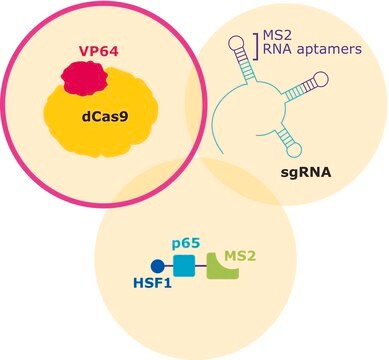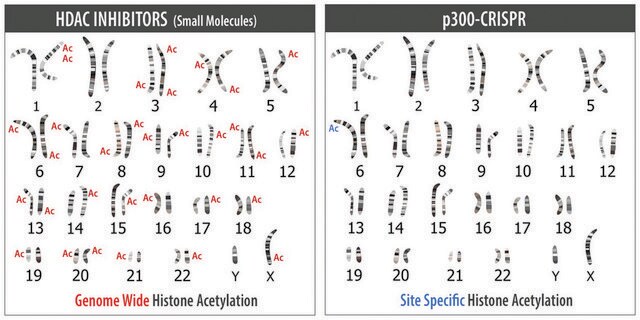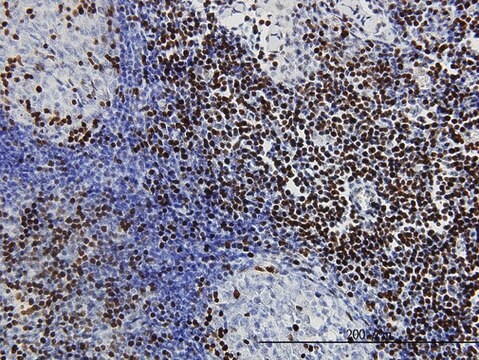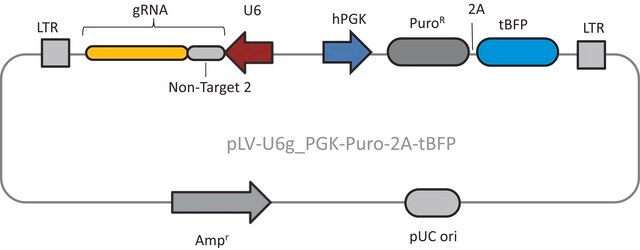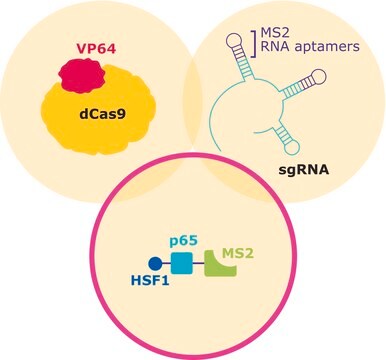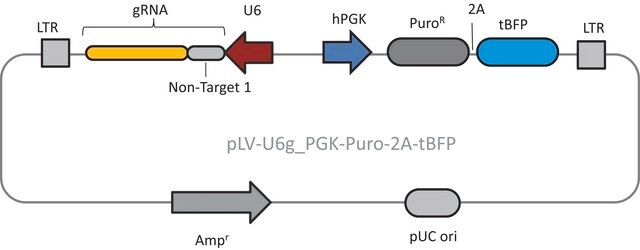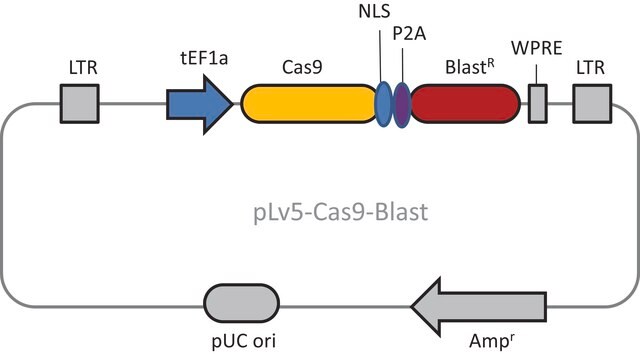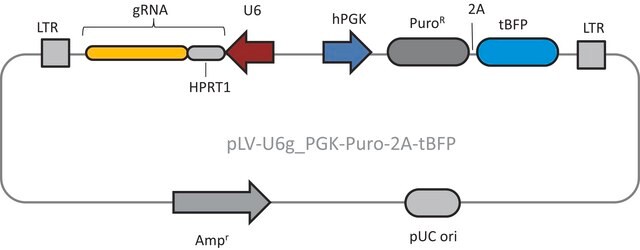SAMVP64BST
dCas9-VP64-Blasticidin SAM CRISPRa Helper Construct 1 Plasmid DNA
Sign Into View Organizational & Contract Pricing
All Photos(1)
About This Item
UNSPSC Code:
12352200
NACRES:
NA.51
Recommended Products
packaging
vial of 20 μL
concentration
500 ng/μL in TE buffer; DNA (10μg of plasmid DNA)
application(s)
CRISPR
shipped in
dry ice
storage temp.
−20°C
General description
This product is a lentiviral plasmid that utilizes the EF1 alpha promoter to drive expression of dCas9-VP64 and blasticidin resistance cassette linked by a 2A peptide (EF1a-dCas9-VP64-2A-Blasticidin) allowing for easy selection following successful transfection or transduction. Use Sigma′s lentiviral dCas9-VP64 plasmid for generation of lentiviral particles and efficient production of stable cell lines expressing dCas9-VP64 for CRISPR based transcipritonal activation and genome wide gain of function screening. Sigma′s lenti-dCas9-VP64 plasmid is one part of a three part CRISPR system with individual dCas9-VP64, MS2-p65-HSF1 and gRNA expression vectors.
To order gRNA in any format click here
To order gRNA in any format click here
Application
Functional Genomics/Target Validation
- Unbiased forward genetic screening
- Strong transcriptional activation in multiple cell lines
- Manufacture of dCas9-VP64 expressing Lentiviral Particles
Features and Benefits
- Highly specific and highly active
- Sequence verified high purity plasmid DNA
- Activates genes through transcriptional activation rather than cDNA based overexpression
Learn more about SAM CRISPR Activators at SigmaAldrich.com/CRISPRa
Principle
CRISPR/Cas systems are employed by bacteria and archaea as a defense against invading viruses and plasmids. Recently, the type II CRISPR/Cas system from the bacterium Streptococcus pyogenes has been engineered to function in eukaryotic systems using two molecular components: a single Cas9 protein and a non-coding guide RNA (gRNA). The Cas9 endonuclease can be rendered inactive (dCas9) with mutations to the two protein domains, RuvC and HnH (D10A and H840A respectively), which are responsible for nuclease activity. The nuclease deficient protein can then be fused with the transcriptional activator VP64 and used in conjunction with a guide RNA modified with MS2 RNA aptamers that function to recruit the additional transcriptional coactivators p65 and HSF1. The assembled SAM complex is then used as a cargo delivery system to target gene promoters, enabling site-specific transcriptional activation of the gene of interest.
Storage Class Code
12 - Non Combustible Liquids
WGK
WGK 3
Flash Point(F)
Not applicable
Flash Point(C)
Not applicable
Choose from one of the most recent versions:
Certificates of Analysis (COA)
Lot/Batch Number
Sorry, we don't have COAs for this product available online at this time.
If you need assistance, please contact Customer Support.
Already Own This Product?
Find documentation for the products that you have recently purchased in the Document Library.
Customers Also Viewed
Genome-scale transcriptional activation by an engineered CRISPR-Cas9 complex
Konermann S, et al
Nature, 517, 583-588 (2015)
Genome-scale CRISPR-Cas9 Knockout and Transcriptional Activation Screening.
Joung, S. et al.
Nature Protocols, 12, 828-863 (2017)
Julia Joung et al.
Nature protocols, 12(4), 828-863 (2017-03-24)
Forward genetic screens are powerful tools for the unbiased discovery and functional characterization of specific genetic elements associated with a phenotype of interest. Recently, the RNA-guided endonuclease Cas9 from the microbial CRISPR (clustered regularly interspaced short palindromic repeats) immune system
Our team of scientists has experience in all areas of research including Life Science, Material Science, Chemical Synthesis, Chromatography, Analytical and many others.
Contact Technical Service